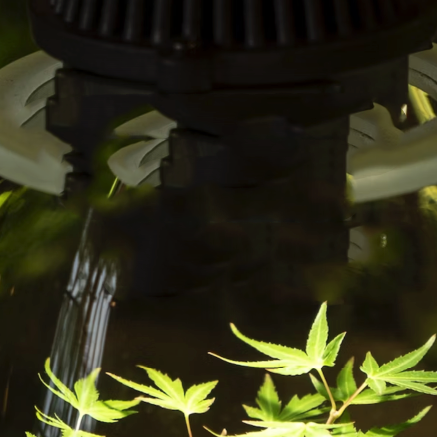Whilst the word “light” is used frequently throughout our industry, by looking into it in much more detail we find that by understanding a little bit of the science we can help you make an informed decision when choosing a light source.
This does three things:
1) Saves us all money
2) Gets optimum results and
3) Helps you choose a product based on its actual merit
LED grow lights are a hot topic in the world of hydroponics and looking around online it’s easy to find opinions and conjecture but nowhere can a person find a straight answer as to whether LED lighting is a better solution or not. So we’re going to change that.
Over the next few weeks we are going to give you a definitive answer to this question and prove what we say through a controlled experiment. We’ll take you through the science too if you’re interested.
The Science Behind Light, An Introduction
What we call “light” is actually the range of electromagnetic radiation with a wavelength our human eyes can actually see. While a normal photographer’s light meter will measure a light level as perceived by a human, a normal light meter does not give a true indication of the amount of light that can actually be used by a plant.
Normal Light Sensor vs Quantum Sensor
The trouble with using a standard light meter to test light being used for growing plants is that it doesn’t differentiate between light that can be used by plants for photosynthesis and light that is not (or less) useful to plants for photosynthesis. So what is the solution?
A relatively new breed of light sensor called a quantum sensor is now available on the market. It only actually measures the light that a plant can use. It does this by measuring the actual amount of photons of light (that are usable for photosynthesis) that hit a given area within a given time.
The resulting measurement is of something called PPFD (Photosynthetic Photon Flux Density) which is measured in micromoles (μmol). This gives us a very accurate idea of how much plant usable light is actually being received at a particular point under the lamp.
We’ve got our hands on one of these amazing quantum sensors made by LI-COR, and intend to use it with a vengeance. This piece of kit used in our experiment will give a straight answer to the LED bulb debate.
We will be using the LI-COR LI-190SA Quantum Sensor and the LI-COR LI-250A Meter to compare a brand new 300 Watt LED Grow Lamp made by the respected LED grow light manufacturer Prakasa against more conventional plant lights such as a 250 HPS (High Pressure Sodium) Light, a 250 Watt MH (Metal Halide) lamp, a T5 Fluorescent fitting and finally a 300 Watt Plasma light made by Gavita.
We will be taking a look at many aspects of their performance such as the lighting area coverage and how deep the light penetrates. We'll be leaving no stone unturned in our quest to find which is the best type of light to grow your plants. Don't miss the next post where we'll be taking a closer look at the LED light itself and the LI-COR meter. Don't miss it!

